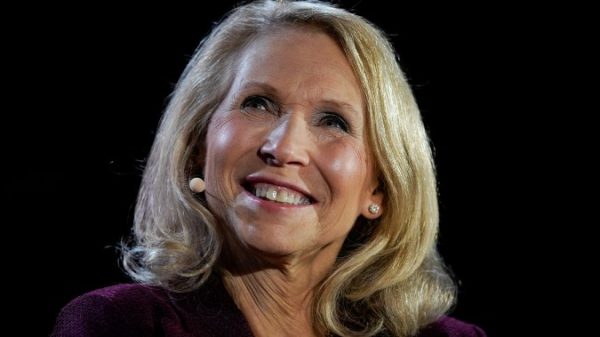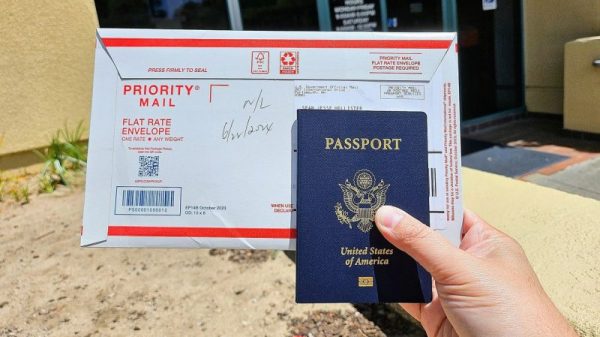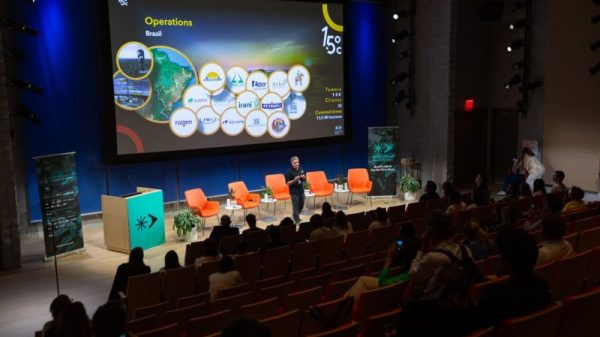When Michigan Republicans were planning in late 2020 to submit a slate of electors who supported Donald Trump — despite Trump having lost the state by nearly three points — then-state GOP Chairwoman Laura Cox thought better of it.
“I was very uncomfortable with that, as per my lawyers’ opinion,” Cox told the congressional Jan. 6 committee last year.
So she said she proposed an alternative: Instead of submitting the electors as if Trump had won, the party would sign a document merely offering the electors as a contingency in case the courts somehow awarded Michigan to Trump.
Those involved did not adopt Cox’s plan. The courts didn’t overturn Michigan’s result. And now the 16 people who signed a document falsely claiming they were duly elected have been indicted.
Michigan on Tuesday became the first state to charge so-called “fake” Trump electors. The 16 electors who signed that document are each charged with eight felonies, including forgery.
As documents from the office of state Attorney General Dana Nessel (D) note, they not only falsely declared duly elected status, but they also falsely claimed they had “convened and organized in the State Capitol” — the location where such proceedings must legally be held — despite meeting at state GOP headquarters instead. The possibility of criminal charges for making such false statements in a legal document has long been talked about. Alternate electors in Georgia have also been scrutinized, and news broke last week that Arizona’s Democratic attorney general was similarly probing her state’s alternate electors.
The Michigan 16 become the latest in a long line of people indicted for their roles in trying to overturn the election for Trump. That list could possibly grow to include Trump himself soon; news broke earlier Tuesday that special counsel Jack Smith had informed Trump that he was a target in his Jan. 6 investigation. It’s not clear whether any charges might involve the fake-elector plans that developed in the weeks leading up to Jan. 6.
Here’s what the Michigan case reinforces about the “fake elector” plots: just how many people seemed to recognize that the plan wasn’t exactly on the up-and-up.
The documents released with the indictment allege that those involved talked about how the effort was supposed to remain secret.
When one now-indicted participant posted about it on Facebook, according to the Michigan affidavit, another complained “we were all asked to keep silent” and added, “Was she not told to keep quite [sic].”
A third participant, now-indicted Michigan Republican National Committeewoman Kathy Berden, confirmed, according to the affidavit, “Yes we all were.”
The Michigan case is the third in which we’ve learned about how the fake electors intended to operate in secret. The Washington Post reported last year on an email showing a Trump campaign staffer advising Georgia’s alternate electors to operate in “complete secrecy.” Separately, a fake elector in Wisconsin talked about efforts to meet in secret.
In each case, those involved indicated they worried that people knowing what was happening would compromise the mission or present security concerns. In Michigan, there was even talk of sneaking into the Capitol the day before the constitutionally required date of Dec. 14 and staying overnight, according to Cox’s testimony. She labeled the idea “insane and inappropriate.”
Despite the calls for secrecy, in each of the three states, they wound up promoting their efforts, at least after the fact.
But it’s not the only evidence that at least some of the people involved understood in real time how dicey what they were doing was.
In addition to Cox refusing to participate, so did two of the 16 people who had initially volunteered to serve as Trump electors. One of them was former Michigan secretary of state Terri Lynn Land (R), who in that role had run the state’s elections. (Cox testified that Land was also not “comfortable” with the effort.) Those two were replaced.
Cox stated in her Jan. 6 committee testimony, “That document was like an affidavit stating that they were voting for the president, and that was not — they weren’t doing that.”
Similarly, one of the now-indicted signers, Meshawn Maddock, who later became state party co-chairwoman, signaled a month before signing that she might have been aware there were potential legal problems with such an effort. When asked by Politico’s Kyle Cheney in mid-November 2020 about the possibility of submitting alternate electors for Trump, Maddock said, “What I might want to do can be completely different from what we are legally capable of doing, does that make sense?”
While Michigan Republicans opted not to pursue Cox’s plan, some in other states took more care to insulate themselves — in line with her idea. In both New Mexico and Pennsylvania, the electors built into the documents they signed a contingency stating that they were the duly chosen electors only if Trump’s loss in their state were to be overturned.
More broadly, the big question about the fake-elector plot was whether it was truly such a contingency in case a state’s results were overturned, as Trump’s campaign insisted, or whether it was intended to try to overturn the result on Jan. 6 regardless, as Trump eventually attempted to do. Evidence suggests that at least some involved understood this early on as being about the intended outcome. Georgia’s alternate Trump electors have suggested in court that Trump’s campaign might have “misuse[d]” them when he tried to overturn the results on Jan. 6 even without Georgia’s result being overturned.
We might soon learn a lot more about that, via the special counsel’s investigation. For now, though, 16 more people are facing serious penalties for playing roles in Trump’s scheme — in seemingly predictable ways.
When Michigan Republicans were planning in late 2020 to submit a slate of electors who supported Donald Trump — despite Trump having lost the state by nearly three points — then-state GOP Chairwoman Laura Cox thought better of it.
“I was very uncomfortable with that, as per my lawyers’ opinion,” Cox told the congressional Jan. 6 committee last year.
So she said she proposed an alternative: Instead of submitting the electors as if Trump had won, the party would sign a document merely offering the electors as a contingency in case the courts somehow awarded Michigan to Trump.
Those involved did not adopt Cox’s plan. The courts didn’t overturn Michigan’s result. And now the 16 people who signed a document falsely claiming they were duly elected have been indicted.
Michigan on Tuesday became the first state to charge so-called “fake” Trump electors. The 16 electors who signed that document are each charged with eight felonies, including forgery.
As documents from the office of state Attorney General Dana Nessel (D) note, they not only falsely declared duly elected status, but they also falsely claimed they had “convened and organized in the State Capitol” — the location where such proceedings must legally be held — despite meeting at state GOP headquarters instead. The possibility of criminal charges for making such false statements in a legal document has long been talked about. Alternate electors in Georgia have also been scrutinized, and news broke last week that Arizona’s Democratic attorney general was similarly probing her state’s alternate electors.
The Michigan 16 become the latest in a long line of people indicted for their roles in trying to overturn the election for Trump. That list could possibly grow to include Trump himself soon; news broke earlier Tuesday that special counsel Jack Smith had informed Trump that he was a target in his Jan. 6 investigation. It’s not clear whether any charges might involve the fake-elector plans that developed in the weeks leading up to Jan. 6.
Here’s what the Michigan case reinforces about the “fake elector” plots: just how many people seemed to recognize that the plan wasn’t exactly on the up-and-up.
The documents released with the indictment allege that those involved talked about how the effort was supposed to remain secret.
When one now-indicted participant posted about it on Facebook, according to the Michigan affidavit, another complained “we were all asked to keep silent” and added, “Was she not told to keep quite [sic].”
A third participant, now-indicted Michigan Republican National Committeewoman Kathy Berden, confirmed, according to the affidavit, “Yes we all were.”
The Michigan case is the third in which we’ve learned about how the fake electors intended to operate in secret. The Washington Post reported last year on an email showing a Trump campaign staffer advising Georgia’s alternate electors to operate in “complete secrecy.” Separately, a fake elector in Wisconsin talked about efforts to meet in secret.
In each case, those involved indicated they worried that people knowing what was happening would compromise the mission or present security concerns. In Michigan, there was even talk of sneaking into the Capitol the day before the constitutionally required date of Dec. 14 and staying overnight, according to Cox’s testimony. She labeled the idea “insane and inappropriate.”
Despite the calls for secrecy, in each of the three states, they wound up promoting their efforts, at least after the fact.
But it’s not the only evidence that at least some of the people involved understood in real time how dicey what they were doing was.
In addition to Cox refusing to participate, so did two of the 16 people who had initially volunteered to serve as Trump electors. One of them was former Michigan secretary of state Terri Lynn Land (R), who in that role had run the state’s elections. (Cox testified that Land was also not “comfortable” with the effort.) Those two were replaced.
Cox stated in her Jan. 6 committee testimony, “That document was like an affidavit stating that they were voting for the president, and that was not — they weren’t doing that.”
Similarly, one of the now-indicted signers, Meshawn Maddock, who later became state party co-chairwoman, signaled a month before signing that she might have been aware there were potential legal problems with such an effort. When asked by Politico’s Kyle Cheney in mid-November 2020 about the possibility of submitting alternate electors for Trump, Maddock said, “What I might want to do can be completely different from what we are legally capable of doing, does that make sense?”
While Michigan Republicans opted not to pursue Cox’s plan, some in other states took more care to insulate themselves — in line with her idea. In both New Mexico and Pennsylvania, the electors built into the documents they signed a contingency stating that they were the duly chosen electors only if Trump’s loss in their state were to be overturned.
More broadly, the big question about the fake-elector plot was whether it was truly such a contingency in case a state’s results were overturned, as Trump’s campaign insisted, or whether it was intended to try to overturn the result on Jan. 6 regardless, as Trump eventually attempted to do. Evidence suggests that at least some involved understood this early on as being about the intended outcome. Georgia’s alternate Trump electors have suggested in court that Trump’s campaign might have “misuse[d]” them when he tried to overturn the results on Jan. 6 even without Georgia’s result being overturned.
We might soon learn a lot more about that, via the special counsel’s investigation. For now, though, 16 more people are facing serious penalties for playing roles in Trump’s scheme — in seemingly predictable ways.























